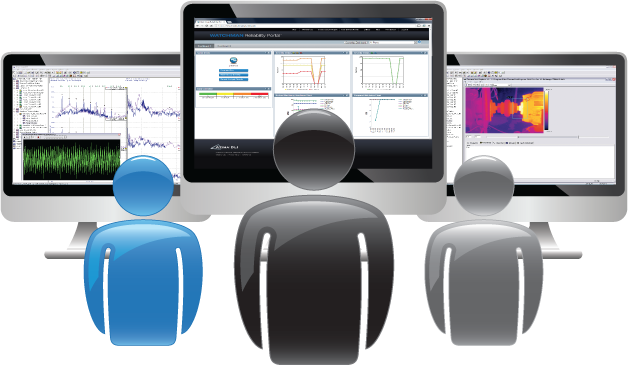
The Academy of Ukrainian Press has presented the results of contents analysis of news (October 2003 – September 2004) and political advertisement (July 2004 – September 2004) on leading Ukrainian TV channels, and materials of periodical press (April 2004 – September 2004) carried out within the project “Monitoring of Political News”.
The research method is contents analysis of media materials for one entire week of each month.
The Project is carried out by research teams of the Academy of Ukrainian Press and the Institute of Sociology of the National Academy of Sciences of Ukraine, through the support of the International Renaissance Foundation, the US Embassy to Ukraine, and the Representative Office of OSCE. Project leaders are Dr. Nataliya Kostenko and Dr. Valeriy Ivanov.
POLITICAL NEWS OF LEADING UKRAINIAN TELEVISION CHANNELS IN THE ELECTION CAMPAIGN (11th Stage)
The presidential election remains the main theme of the political week.
The share of news related to inner politics increased in the overall news flow to 37% in September as compared to 35% in August, and 25% in June. The presidential election has been the main weekly topic for two consecutive months (15% of the news flow in September and 13% in August). Before that it was the work of the President of Ukraine.
The tendency of biased and one-sided reporting in news programs remained in the news programs (90% on average of the September news flow, 92% of one-sided reporting in August). The 5th Channel has the smallest share (56%), whereas UT-1 has the largest share (96 %).
The approaching election does not influence reporting contexts. Two thirds of news in July, August, and September are presented in positive and neutral contexts.
Like in previous months, every sixth news report does not contain an information source.
The block “Our Ukraine” remains the leader of attention in TV news amongst group participants of the election process: 7.5% of records in September, 6% - in August, 4.5% - in July. The block is also the leader in terms of negative and ironic assessments (number of assessments in September exceeded one and a half times those in July: 2.3% vs. 1.4%).
During the last three months TV news focused attention on V.Yanukovych: his rating is better than that of the President of Ukraine. Attention towards Yanukovych in September and August is twice higher than attention towards his main political opponent V.Yushchenko (20% vs. 10% in September, and 23% vs. 11% in August). Two positive reports about Yushchenko contrast with one negative or ironic; eight positive reports about Yanukovych are compared with one negative or ironic. V.Yushchenko is the leader in terms of negative and ironic context on all channels of Ukrainian television.
In July, August, and September V.Yanukovych is the absolute leader amongst presidential candidates in terms of share of live coverage in TV news (13% in September, 8% in August). There is no live coverage of V.Yushchenko in the news of the first week of September (it may have been related to his illness).
Changes of live coverage are interesting to follow throughout the channels on September 20-22, 2004. September 21 – Yushchenko’s announcement of his illness. September, 20 – V.Yanukovych: 95 sec, V.Yushchenko: 0 sec. September, 21 – V.Yanukovych: 129 sec, V.Yushchenko: 426 sec. September, 22 – V.Yanukovych: 378 sec, V.Yushchenko: 0 sec. Thus, increase in attention and volume of live coverage of V.Yushchenko did not go beyond one day: September 21, 2004.
POLITICAL ADVERTISEMENT IN THE ELECTION CAMPAIGN (2nd Stage)
Channels’ advertising strategies: explicit advertisement is a priority (videos, presidential candidates’ speeches) without excepting latent forms (in other programs, “anonymous candidate”).
Candidates’ advertising strategies: 1) the majority of candidates are presented in the advertising flow, however, differ in their number and volume of advertisements; 2) Pro & Contra (use of advertisement, anti-advertisement).
The leitmotif of advertisement: “Yes” (“My choice”) vs. “Choice 2004” (“Their choice”).
Advertising images: vary in space “Moral imperative” (change of the government) vs. “Social pragmatism“ (succession of power).
The third month of the election campaign is characterized by domination of explicit advertisement. The number of advertisements decreased in the first half of September as compared to August (296 vs.363). However, the volume of time of political advertisement increased 2.5 times (26185 sec vs. 10627 sec) due to the fact that most of political advertisements are specially made products, i.e. advertising videos (84% advertisements and 94% time in September vs. 69% and 49% in August).
The volume in time units increased owing to broadcasting of political advertisements of almost all presidential candidates. Shares of only half of all presidential candidates exceeded 1% of the advertising flow. V.Yushchenko still has the largest share of advertisement (advertisements / time – 38% / 22%). Shares of political advertisement of R.Kozak, O.Yakovenko, Y.Zbitnyev, L.Chernivetskyi account only for 5-10% of all advertisements / 4-7% of the total time. Direct advertisement of V.Yanukovych constitutes 4% / 5%, indirect – 3%.
In September UT-1 and 5th Channel remain the main broadcasters of political advertising (53% of all advertisements and 87% of total air time vs. 61% and 65% resp. in August). In the first month of this fall presidential candidates campaign mainly for themselves, and not against other candidates. However, every fourth advertisement contains anti-advertising elements which are directed towards the obvious leaders of the presidential campaign. In September the share of anti-advertisement towards V.Yushchenko is twice higher than that against V.Yanukovych (20% vs. 10% of all advertisements).
During the analyzed week television continues pushing ahead four key advertising ideas: 1) “social patronage” (V.Yanukovych), 2) “Rational choice” (O.Moroz, P.Simonenko, A.Kinakh), 3) “Moral imperative” (V.Yushchenko, L.Chernovetskyi, Y.Zbitnyev), 4) “Warning of threats” (O.Bazylyuk, R.Kozak, O.Yakovenko, V.Kononov).